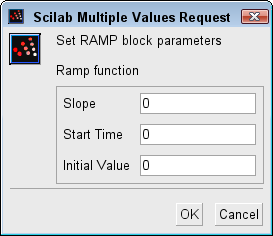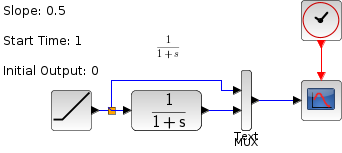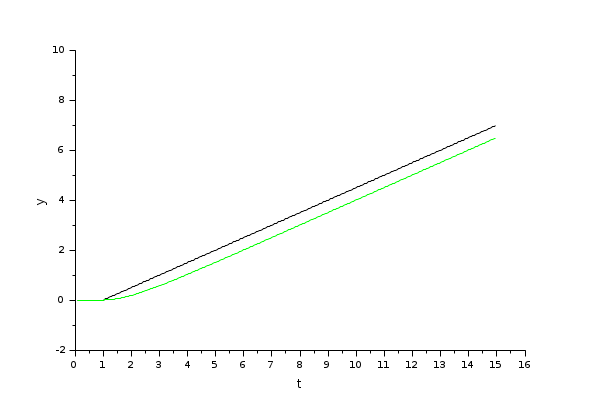Please note that the recommended version of Scilab is 2026.0.0. This page might be outdated.
See the recommended documentation of this function
RAMP
Ramp
Block Screenshot

Contents
Description
The Ramp block generates a signal that starts at a specified Start Time and Initial Value and increases by a specified rate (Slope parameter). The output signal is defined by the following equation:

where
t0 is the
Start Time,
s0 the
Initial Value and
k the
Slope.
Data types
Output: scalar double.
Parameters

Slope
Scalar. The rate of change of the generated signal.
Properties : Type 'vec' of size 1.
Start Time
Scalar. The time at which the signal begins to increase.
Properties : Type 'vec' of size 1.
Initial Value
Scalar. The initial value of the signal.
Properties : Type 'vec' of size 1.
Default properties
always active: yes
direct-feedthrough: no
zero-crossing: yes
mode: yes
regular outputs:
- port 1 : size [1,1] / type 1
number/sizes of activation inputs: 0
number/sizes of activation outputs: 0
continuous-time state: no
discrete-time state: no
object discrete-time state: no
name of computational function: ramp
Example
This diagram shows the use of RAMP block to obtain the response to a ramp signal of a first order's system defined by a transfer function.


Interfacing function
SCI/modules/scicos_blocks/macros/Sources/RAMP.sci
Computational function
SCI/modules/scicos_blocks/src/c/ramp.c (Type 4)
See also
- STEP_FUNCTION — Step Function
- CURV_f — Curve
- Sigbuilder — Signal creator/generator
| Report an issue | ||
| << PULSE_SC | Palette Sources | RAND_m >> |